Attention on the Russian use of Attack Helicopters (AH) in the war in Ukraine has ebbed and flowed over the course of the conflict. It can largely be broken down into discrete phases, and depending on the phase, the narrative around their effectiveness, survivability and lethality has shifted dramatically. Declan Daly provides insight into Russia’s Alligator, the KA-52.
Although backed up by Mi 28 ‘Havoc’ and Mi24/35 ‘Hind’ fleets, along with armed Mi 8/17 ‘Hip’ variants, the brunt of the Russian attack
helicopter effort has been laid across the shoulders of the KA52 (NATO reporting name 'Hokum B'), also known as the ‘Alligator’. As a
result, it has suffered the most prominent losses, but has also delivered significant tactical successes for Russia. At times. It has been
suggested that its loss rate in terms of aircraft and experienced crews was such that the fleet would be wiped out, and that limitations in
the weapon systems employed and inherent flaws in the aircraft were contributing to a short shelf life for the helicopter. Recent events
give a hint that the situation for Alligator units may not be as bleak as Western observers might like. It is more apparent now that tactics
and manner of its operational deployment may have played far more of a role in both the good and bad days for Alligator crews. Tactics
employed by phase, the lessons that may have been learned by Russia and the current state of play, are examined.
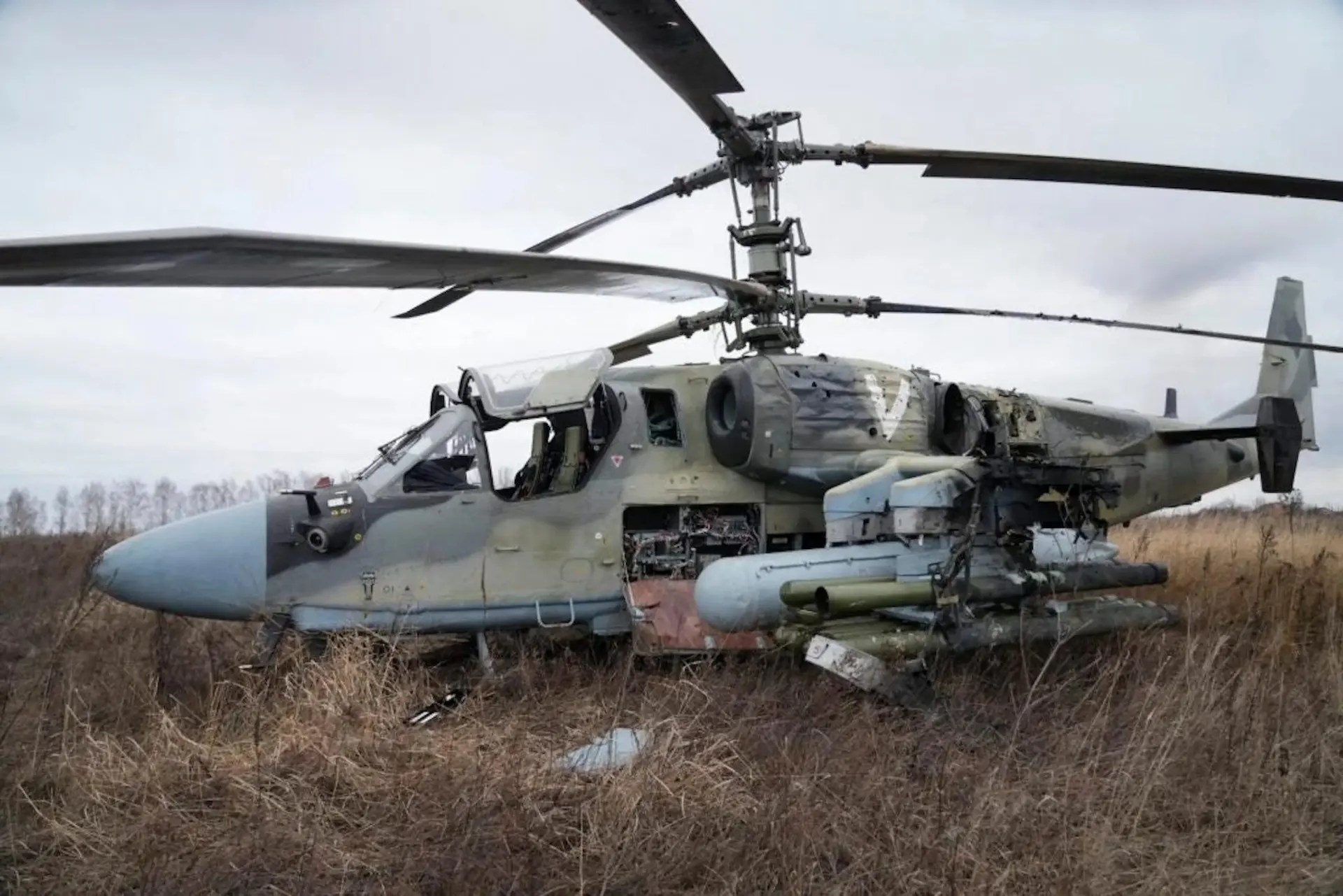
Phase One – Attack
KA52s were at the forefront from the first day of the war, including acting as escorts for the poorly conceived and executed heliborne attack on Hostomel Airport which was ultimately repulsed by Ukraine (see Paul Kennard's article, 'Is Air Assault Really Dead...or Just Resting?' in Antares Issue 5 for more details...). Indeed, some of the characteristics that the helicopter war would develop became evident on this first day when one of KA52s involved was brought down by small arms fire, landing away from the initial point where it was damaged, which at least spared the crew from making the old faux pas of crashing next to the very people you were attacking a few minutes earlier. The Alligators were heavily utilized, especially at night; despite the introduction to service of the Mi28N ‘Night Hunter’. This was the planned pre-war role of the KA52, acting in support of Russian special forces which meant that the crews likely had a higher degree of training at night in an operational environment - reflective of the war in Ukraine, and were thus seen as a better fit for nocturnal work.
Operating alongside the rest of the attack fleet by day, but primarily in KA52-only formations at night, during the initial attacking phase
of the war, the helicopters carried out aggressive hunter/killer actions behind Ukrainian lines, with penetrations of up to 50km being
reported. However, as it became apparent that the ‘Special Military Operation’ as the invasion was euphemistically called in Russian
circles would take longer than expected, the rate and range of these aggressive hunter killer ops decreased dramatically. Loss rates were
high, with some figures giving as many as 44% or 59 out of 130 pre-war airframes destroyed or damaged in all phases.

These losses were due to a number of factors. One was a lack of armour around the engines of the helicopter, making it more susceptible to
small arms fire. Another was due to the sheer proliferation of Short Range Air Defence (SHORAD) that was employed by the Ukrainians. The
weapons brought to bear included not just the expected small arms and Man Portable Air Defence Systems (MANPADS), but also Anti-Tank
Guided Missiles (ATGM) such as the increasingly celebrated Javelin. Despite its reputation as a tank slayer, the Javelin is only able to
engage airborne targets with a crossing speed of about 80kts – that is, if a target is moving perpendicular to the launcher faster than that
speed, the missile is incapable of manoeuvring to hit it. The reason that the Alligators were falling victim to such weapons despite a top
speed of 162kts is down to the tactical requirement to fly at and below tree top height (and hence slower) to avoid observation and the
associated SAMS, and also because of a feature of the primary guided weapon employed by the KA52 at that time, the Vikhr beam riding
missile. Beam riding missiles do not track a laser or radar reflection with a seeker head in the nose of the weapon, but rather by looking
back to the helicopter to see where the laser on the aircraft is pointing. This makes it more or less jam proof, but does require that the
firing aircraft holds a hover or very close to it during the flight time of the missile, otherwise the weapon will lose sight of the laser.
At maximum range, this whole procedure can take up to 25 seconds.
Count that out loud. It’s a very long time to stay exposed to enemy fire when you’ve just announced to everyone where you are by firing a missile at them.
The loss rate, coupled with a general reorientation of the war away from the planning assumptions the Russians had on day one, led to an
interim phase. During this time, the Russian AH fleet more or less ceased attacks forward of their own lines and did their best to stay out
of range of Ukrainian Ground Based Air Defence ( GBAD ) systems. This lead to the use of helicopters as something more akin to airborne
rocket artillery – they would approach the front lines at very low altitude before 'popping up' to unleash a barrage of unguided rockets
towards Ukrainian positions. Crews would then descend rapidly and turn away in a flurry of countermeasures, exiting the area as quickly as
possible. While these attacks were useful to break up Ukrainian formations as they gathered together, or for simply keeping Ukrainian
soldiers awake for prolonged periods of time, they could not by any means be considered precision strikes.

Phase Two – The Counter Attack
During the first phase and the interim phase, the heavy loss rate amongst KA52s prompted much commentary on the ‘death of
the attack helicopter in modern warfare’. However, during the Ukrainian counter attack of 2023, the KA52s unfortunately proved their worth.
Backed up by a number of KA52M variants which were equipped with the longer ranged LMUR missile, (this has a number of other improvements
over and above Vikhr in terms of its guidance system, being able to be lofted beyond line of sight at a target, using GNSS/Inertial
Guidance, and then specifically targeted by the operator via a data link), the general body of the KA52 fleet was used to ravage Ukrainian
armour as it advanced towards Russian positions. A brutal defensive line and well reccie’d potential lines of advance meant that the
Russian forces could use the helicopters to gather in mass swiftly when Ukrainian armoured vehicles like the US supplied Bradley armoured
fighting vehicle were observed, attack out of range of Ukrainian SHORAD and then disperse back to their Forward Operating Bases
(FOBS). It is considered that the KA52 fleet did much to blunt the effectiveness of the Ukrainian assault. In this Phase, the reputation of
the Alligator changed from being a target of choice to being a formidable enemy. In many respects this is not surprising.
Soviet era, and by extension, Russian doctrine, has always been more coherent when fighting the defensive battle, and it is a much easier
task to ask a conscript to defend a bit of turf rather than seize one from a determined enemy.
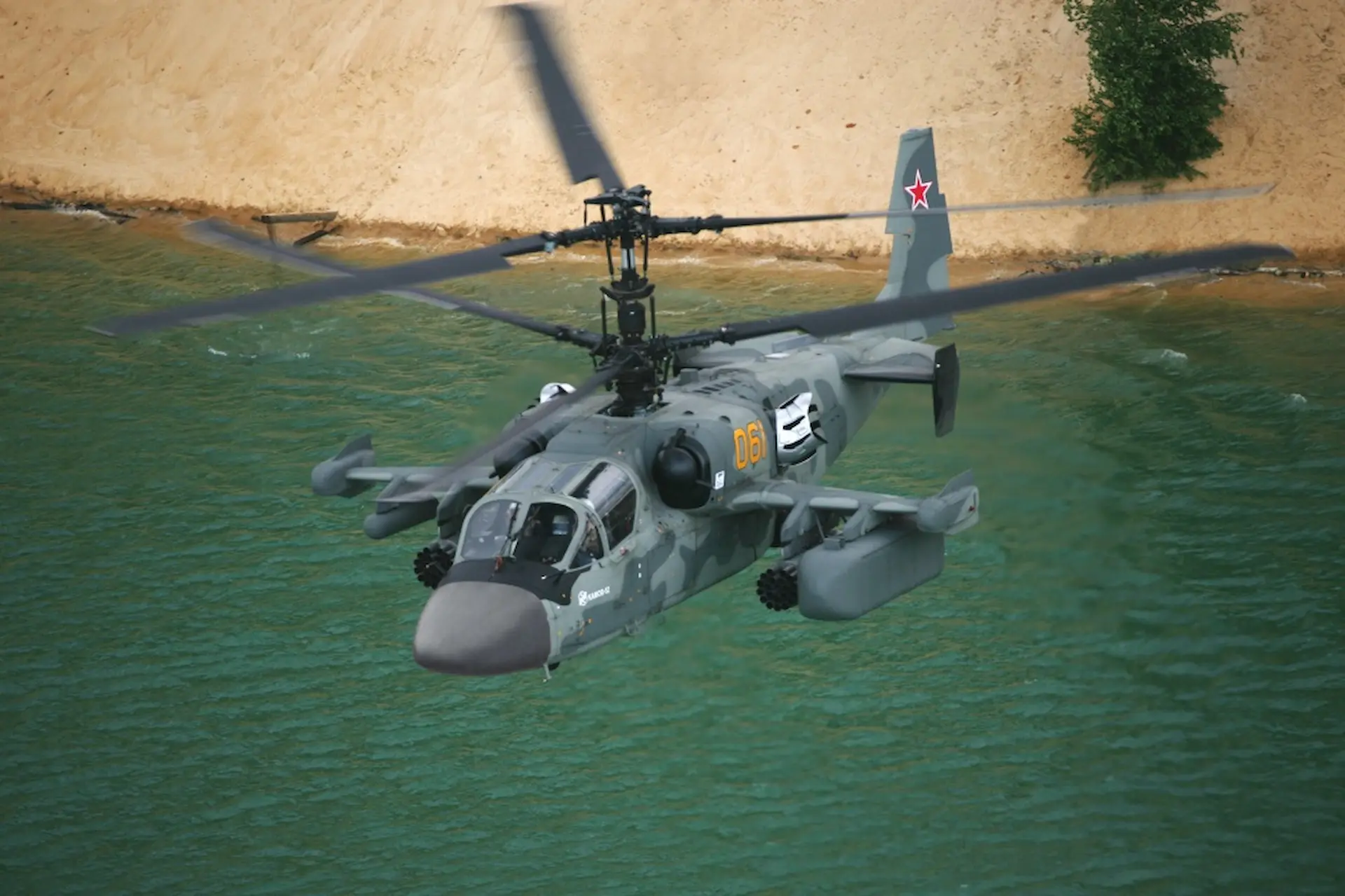
Despite this improved performance, the Alligators did not entirely have it their own way. Using long sought after US supplied ATACMs surface
to surface missiles, Ukrainian forces struck airfields housing KA52s and by some counts, as much as 11% of the pre-war fleet was destroyed
in a day, along with heavy loss of life and other material damages. Combat in Ukraine is not long in providing a reminder to anyone feeling
comfortable in their successes that for every tactical innovation employed, a counter will soon exist.
Lessons Learned – A Hot Wash from the Cold War
The changing tactics employed by Russian attack helicopter crews imply that there was an element of 'learning on the hoof'
going on, but in truth , there was not much new in grander terms to be absorbed. The initial use of helicopters well forward of friendly
lines was probably mandated on day one by operational requirements, and especially with regards to the attack on Hostomel, a high degree of
risk could be accepted at the planners table given the consequences for Ukraine had it gone right for the Russians. After that though a
read through recent history would have shown very mixed results for the use of helicopters in deep strike operations and deep penetration
hunter killer flights, especially in the hours of daylight and when poorly co-ordinated as both a rotary package and as part of a combined
mission with fixed wing escorts.
 This is
something that western planners may also want to consider. We are all familiar with the famous footage of AH 64 Apache helicopters of the
US Army firing the first shots of Desert Storm, but perhaps less people are familiar with the pictures of badly damaged Apaches in the
aftermath of the planned deep strike operation carried out by the 11 Aviation Regiment of the US Army, attacking the Medina Division of the
Republican Guard in March 2003. In that mission, all of the helicopters were hit by anti-aircraft fire and one was shot down. While
there were issues with the planning of that operation, it also showcased the risk that helicopters are inherently subjected to if attacking
targets that fixed wing strike aircraft or deep fires from artillery could also attend to.
This is
something that western planners may also want to consider. We are all familiar with the famous footage of AH 64 Apache helicopters of the
US Army firing the first shots of Desert Storm, but perhaps less people are familiar with the pictures of badly damaged Apaches in the
aftermath of the planned deep strike operation carried out by the 11 Aviation Regiment of the US Army, attacking the Medina Division of the
Republican Guard in March 2003. In that mission, all of the helicopters were hit by anti-aircraft fire and one was shot down. While
there were issues with the planning of that operation, it also showcased the risk that helicopters are inherently subjected to if attacking
targets that fixed wing strike aircraft or deep fires from artillery could also attend to.
On the other hand, French and British attack helicopters were used to good effect in Libya in 2011, flying from naval vessels. Although
faced with a variety of GBAD systems, these were not arranged on the same level as those encountered in Ukraine, and it remains in doubt if
the British element at least would have participated if the Harrier was still available. In short, about the best that can be said for the
use of attack helicopters in deep penetration missions is that it is high risk, could easily involve catastrophic losses and, by virtue of
being behind enemy lines, an aircraft forced to land by hostile action is almost certain to be lost, in addition to which the aircraft will
be exposed to every variety of hostile action from small arms up. Not a risk to be accepted lightly if you intend to sustain combat
operations over time and the balance of opportunities is on your enemies side.
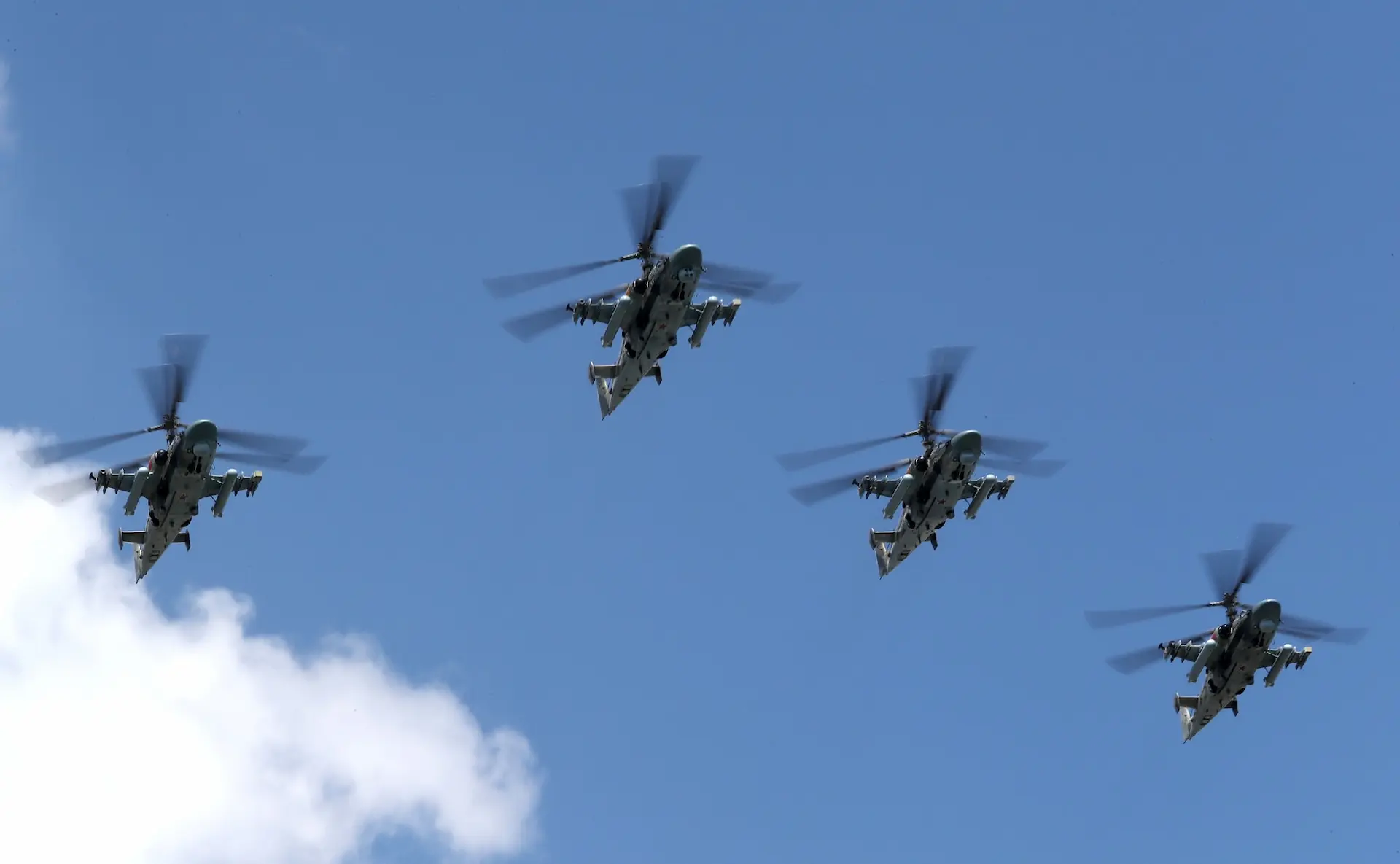 As
alluded to earlier, some videos of KA52s in combat have shown signs of the aircraft vibrating significantly, with vertical bounce quite
evident on the stub wings where the weapons are mounted. This has been apparent when the weapon / fuel load of the aircraft has been heavier
than that seen in previous years during displays etc. The vibration has been put down to resonance as a result of the complicated
transmission coaxial transmission, to the aircraft not getting adequate tracking and balancing attention in wartime maintenance conditions
or to some other inherent flaw in the aircraft. It has been correctly stated that this will have a negative effect on the electro optical
sensors on missiles and reduce their carry life – the amount of flying hours a delicate piece of equipment like a guided missile can sustain
before breaking. However, the greater problem is that such a level of vibration will also affect the ability of the aircrafts own electro
optical systems to acquire targets at a distance and guide weapons accurately. This will by necessity push the aircraft closer to the
target, regardless of the sales brochure range of their weapons. Once there, they are more vulnerable to Ukrainian defensive fire. Any
advantage of having a missile that can outrange Ukrainian MANPADS is potentially eroded or even negated in this circumstance.
As
alluded to earlier, some videos of KA52s in combat have shown signs of the aircraft vibrating significantly, with vertical bounce quite
evident on the stub wings where the weapons are mounted. This has been apparent when the weapon / fuel load of the aircraft has been heavier
than that seen in previous years during displays etc. The vibration has been put down to resonance as a result of the complicated
transmission coaxial transmission, to the aircraft not getting adequate tracking and balancing attention in wartime maintenance conditions
or to some other inherent flaw in the aircraft. It has been correctly stated that this will have a negative effect on the electro optical
sensors on missiles and reduce their carry life – the amount of flying hours a delicate piece of equipment like a guided missile can sustain
before breaking. However, the greater problem is that such a level of vibration will also affect the ability of the aircrafts own electro
optical systems to acquire targets at a distance and guide weapons accurately. This will by necessity push the aircraft closer to the
target, regardless of the sales brochure range of their weapons. Once there, they are more vulnerable to Ukrainian defensive fire. Any
advantage of having a missile that can outrange Ukrainian MANPADS is potentially eroded or even negated in this circumstance.
Sticking with MANPADS, the countermeasures used by the KA52 have been seen to be effective during the first, attacking, phase of the war. In some cases, aircraft were shot down only when their stock of flares ran out (whether in the air, or they were never loaded due to logistical pressures is not relevant here, they weren’t available when they were needed ). The sheer number of MANPADS, ATGMs, and other weapons making up the Ukrainian anti-aircraft environment were enough to overwhelm the helicopters’ defences. The critical lesson here is for western suppliers of Ukrainian equipment – numbers matter and there is no scope to slow down shipments regardless of domestic political machinations on the subject.
In the phase of operations surrounding the Ukrainian counter attack of last summer, the bitter lesson is that armour moving ahead of
friendly GBAD is extremely vulnerable to attack helicopters’ operating under protection of their own defensive fires and close to their own
lines. Both Ukraine and Russia could have looked back to the 1973 Yom Kippur War / October War when Israeli aircraft suffered heavy
losses when pushing into Egyptian air defences, but which were able to exact an equally heavy toll on Egyptian ground forces once they
had moved beyond the range of their own SAM umbrella. Notwithstanding that example, the Alligators were operating in this phase in exactly
the way attack helicopters in Europe were meant to do – countering armour thrusts on well reconnoitred lines of advance. It may not have
been Apaches and Cobras at the Fulda Gap of Cold War lore, but it is an example of how damaging they can be when applied in a manner suited
to their traits. Correspondingly, losses in this phase were lower.
 The
last lesson speaks to the narrative around losses as well. Some would have the KA52 fleet all but written off, and there is no doubt that
heavy losses have been sustained. However, it is worthy of note that in January of this year, a KA52 and an armed Hip conducted what can
accurately be described as a show of force over Irish troops at a UN camp in Syria. The implication here is not one of another front
opening up – after an absence from the area of a year, the overt nature of the overflight was more about saying ‘we’re back’ than a threat –
but one of sustainment. Keeping two deployments going in combat is hard work on a fleet, for example note that in the UK, the Chinook fleet
sustained ops in Afghanistan and the Merlin did so in Iraq, neither tried to do both for long. If the KA52 fleet has taken so many losses as
to be on its knees, Syrian and Ukrainian deployments at the same time would be extremely difficult.
The
last lesson speaks to the narrative around losses as well. Some would have the KA52 fleet all but written off, and there is no doubt that
heavy losses have been sustained. However, it is worthy of note that in January of this year, a KA52 and an armed Hip conducted what can
accurately be described as a show of force over Irish troops at a UN camp in Syria. The implication here is not one of another front
opening up – after an absence from the area of a year, the overt nature of the overflight was more about saying ‘we’re back’ than a threat –
but one of sustainment. Keeping two deployments going in combat is hard work on a fleet, for example note that in the UK, the Chinook fleet
sustained ops in Afghanistan and the Merlin did so in Iraq, neither tried to do both for long. If the KA52 fleet has taken so many losses as
to be on its knees, Syrian and Ukrainian deployments at the same time would be extremely difficult.
In this case, it seems to be that replacement aircraft, new build KA52M models, have begun to bolster the fleet numbers. Approximately
fifteen are believed to have been delivered annually in 2022 and 2023 - not enough to make up losses. It has been reported though that
production has been accelerated to between thirty and forty five per year of late, in keeping with Russia’s move to a fully wartime economy.
That they feel comfortable keeping two combat deployments running suggests there may be some truth in these numbers. Once again, the warning
here should be absorbed by Western governments – sustained conflict means sustained (and increased production), not just handing off
spares. At any rate, much like the main battle tank and the gun on the fighter, it would appear that demise of the attack helicopter has
been too quickly foretold. The KA52, certainly, seems to be a an aircraft that will have to feature in western planning for some time to
come.
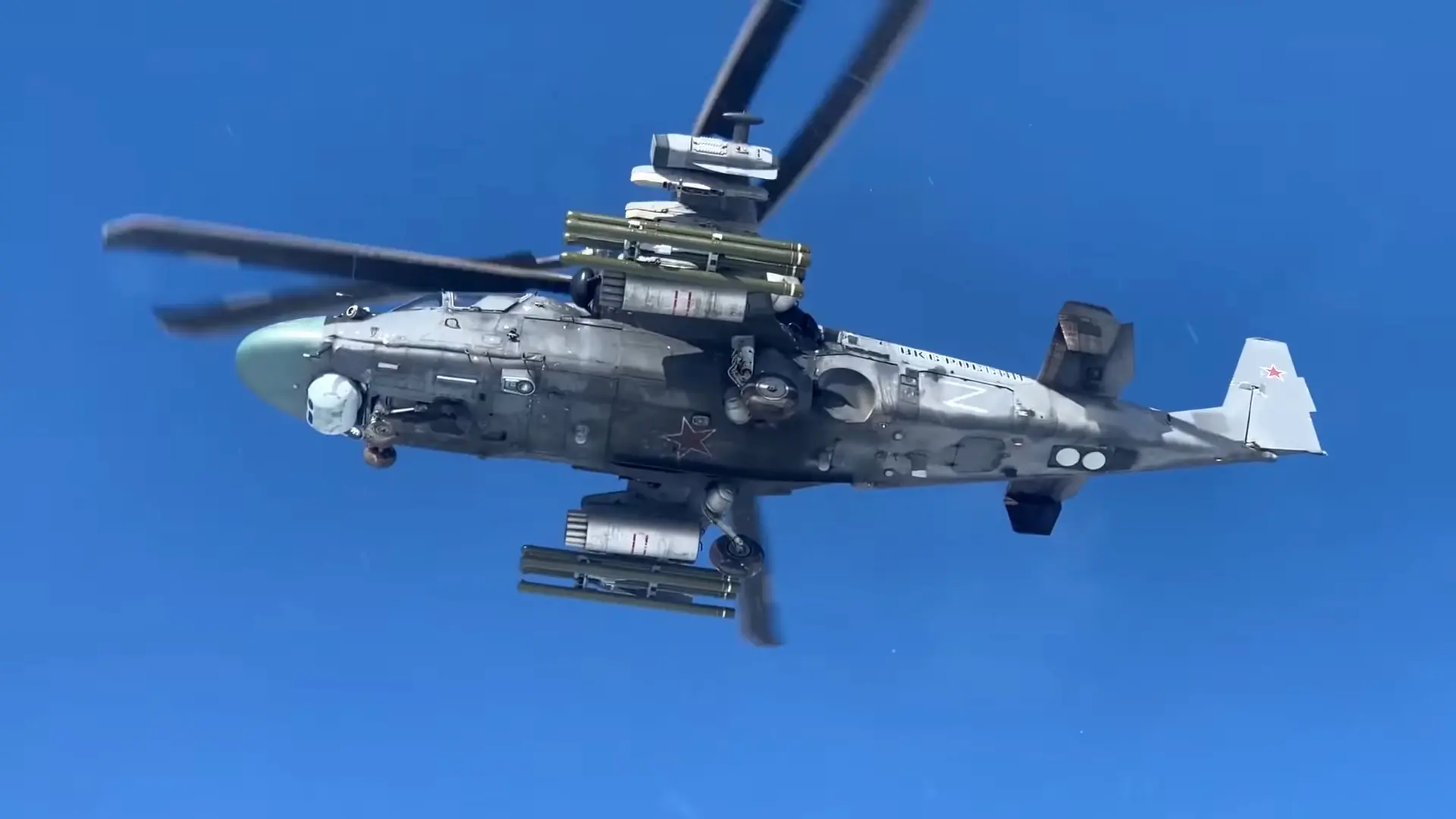
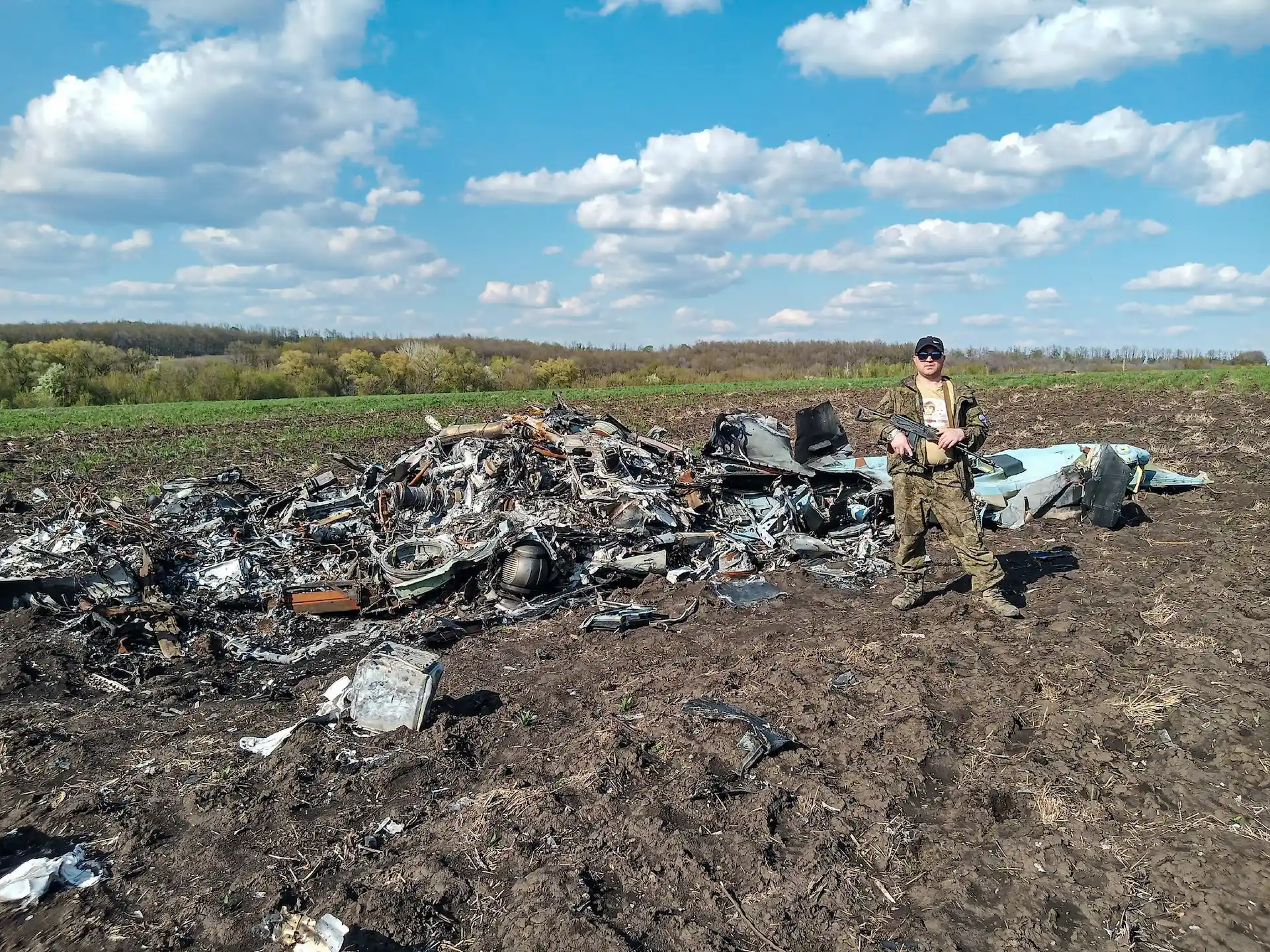
 HOME
HOME



